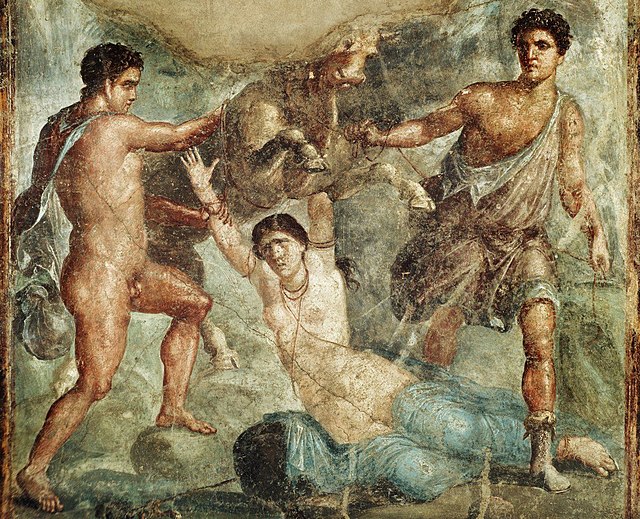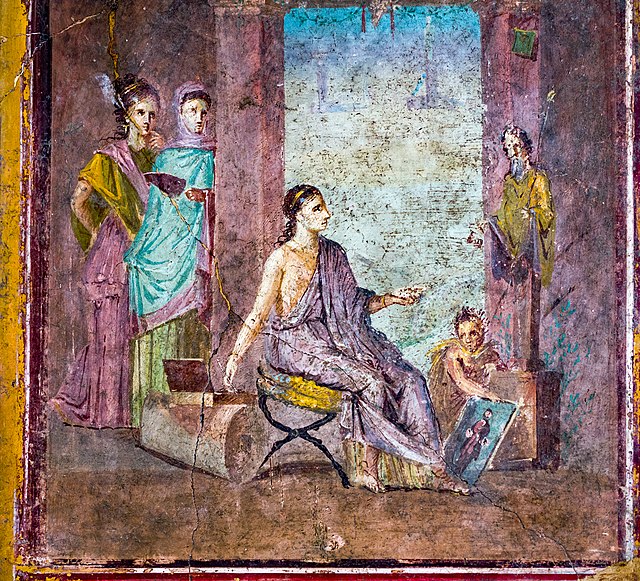The art of Ancient Rome, and the territories of its Republic and later Empire, includes architecture, painting, sculpture and mosaic work. Luxury objects in metal-work, gem engraving, ivory carvings, and glass are sometimes considered to be minor forms of Roman art, although they were not considered as such at the time. Sculpture was perhaps considered as the highest form of art by Romans, but figure painting was also highly regarded. A very large body of sculpture has survived from about the 1st century BC onward, though very little from before, but very little painting remains, and probably nothing that a contemporary would have considered to be of the highest quality.
A fresco depicting wedding. In the center, a young bride is comforted and supported by Venus. 1st century BC, Rome
Preparation of an animal sacrifice; marble, fragment of an architectural relief, first quarter of the 2nd century CE; from Rome, Italy
A Roman fresco depicting Amphion and Zethus subject Dirce to the bull (from the House of the Vettii, Pompeii)
Female painter sitting on a campstool and painting a statue of Dionysus or Priapus onto a panel which is held by a boy. Fresco from Pompeii, 1st century
The Roman Empire was the post-Republican state of ancient Rome. It is generally understood to mean the period and territory ruled by the Romans following Octavian's assumption of sole rule under the Principate in 27 BC. It included territories in Europe, North Africa, and Western Asia and was ruled by emperors. The fall of the Western Roman Empire in 476 AD conventionally marks the end of classical antiquity and the beginning of the Middle Ages.
Augustus of Prima Porta
Nerva (r. 96–98)
Trajan (r. 98–117)
Hadrian (r. 117–138)








